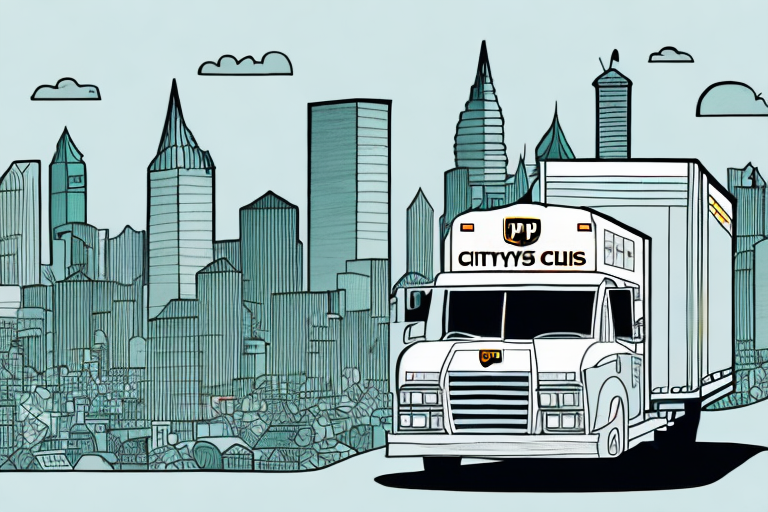Understanding UPS Delivery Area Surcharge Charges
If you frequently ship with UPS, you might encounter an additional fee known as the Delivery Area Surcharge. This article provides a comprehensive overview of what constitutes a UPS Delivery Area Surcharge, the reasons behind these charges, and effective strategies to manage or avoid them.
What are UPS Delivery Area Surcharge Charges?
UPS Delivery Area Surcharges are extra fees applied by UPS for delivering packages to locations deemed “hard-to-reach” or “remote.” These areas are identified based on factors such as distance from major distribution centers, challenging geography, or heightened security requirements.
The surcharge amount can vary depending on the destination country and the nature of the shipment. For instance, delivering to a remote area abroad typically incurs a higher surcharge compared to a similar location within the same country. Additionally, larger or heavier packages that require special handling may attract higher fees. For detailed information, refer to the UPS Surcharge Information.
Why Does UPS Charge Delivery Area Surcharge Fees?
These surcharges help UPS offset the increased costs associated with delivering to remote or less accessible locations. The additional expenses include higher fuel costs, extended delivery times, and the need for specialized equipment or additional staffing.
Not all areas are subject to these fees. UPS maintains a list of ZIP codes and cities classified as remote or hard-to-reach. Customers can verify if their location is affected by visiting the UPS website or contacting UPS customer service. Additionally, UPS offers alternative delivery options, such as holding packages at nearby UPS Access Point locations, which can be more cost-effective.
Comparing UPS Surcharge Charges to Other Shipping Fees
How do Delivery Area Surcharges Differ from Other Fees?
Unlike other UPS fees such as fuel surcharges or residential delivery fees, Delivery Area Surcharges are exclusively based on the destination location. While fuel surcharges fluctuate with global oil prices and residential fees apply to deliveries made to homes, Delivery Area Surcharges depend solely on how remote or inaccessible the delivery address is.
For example, a package shipped to a rural area will attract a Delivery Area Surcharge, whereas the same package shipped to an urban area will not. This surcharge ensures that UPS can maintain efficient service levels even in challenging delivery environments.
Comparing UPS Delivery Area Surcharge Charges with Other Shipping Carriers
Different shipping carriers have varying policies regarding surcharges for remote deliveries. For instance, FedEx and DHL also impose surcharges for deliveries to distant or hard-to-reach locations, but the rates and criteria may differ. It's essential to compare these fees across carriers to determine the most cost-effective option for your shipping needs.
Factors Determining UPS Delivery Area Surcharge Charges
How Does UPS Determine Delivery Area Surcharge Charges?
UPS utilizes specific ZIP codes to identify areas that qualify for Delivery Area Surcharges. If a destination falls within these predefined ZIP code ranges, the surcharge is automatically applied to the shipping cost. These ZIP codes are typically associated with rural areas, islands, or regions with limited transportation infrastructure.
The surcharge is additive to the standard shipping fees and can range from a modest amount to over $100 for international shipments, depending on the location's remoteness and the shipment’s characteristics.
What are the Factors that Affect the Cost of UPS Delivery Area Surcharge Charges?
Several factors influence the cost of Delivery Area Surcharges:
- Location: Remote or rural areas incur higher surcharges due to increased delivery difficulty.
- Distance from UPS Facilities: Greater distances from distribution centers typically result in higher fees.
- Package Size and Weight: Larger and heavier packages require more resources to deliver, increasing the surcharge.
- Delivery Time: Deliveries during peak hours or expedited services may attract additional charges.
These factors ensure that UPS can sustainably manage the logistics of delivering to challenging locations.
Affected Shipments and Consequences
What Types of Shipments are Subject to UPS Delivery Area Surcharge Charges?
All UPS package and freight shipments, both domestic and international, are potentially subject to Delivery Area Surcharges. Shipments to particularly remote areas, such as rural locations, islands, or regions with limited infrastructure, are more likely to incur these fees.
Additionally, shipments requiring special handling, such as hazardous materials or oversized packages, may also attract higher surcharges due to the additional resources needed for safe transportation.
What are the Consequences of Not Paying UPS Delivery Area Surcharge Charges?
Failure to pay Delivery Area Surcharge fees can result in UPS holding or returning the package. For international shipments, non-payment may lead to the package being held at customs or even confiscated. In cases involving hazardous materials, legal consequences and fines may be imposed.
To avoid these issues, it's crucial to ensure all applicable fees are paid promptly. For more information on payment policies, visit the UPS Payment Options.
Strategies for Avoiding and Managing UPS Delivery Area Surcharge Charges
How to Avoid UPS Delivery Area Surcharge Charges?
To minimize or avoid these surcharges, consider the following strategies:
- Use UPS Access Point Locations: Opt to have your package held at a nearby UPS Access Point for pickup, avoiding delivery to the remote address.
- Choose Alternative Carriers: Compare rates with other shipping carriers like FedEx or DHL, which may offer different surcharge structures.
- Consolidate Shipments: Combine multiple packages into a single shipment to reduce overall surcharge fees.
Utilizing these methods can help reduce the additional costs associated with Delivery Area Surcharges.
How to Track and Manage Your UPS Delivery Area Surcharge Charges?
Effective management of surcharges involves monitoring and adjusting your shipping practices:
- Use UPS Online Tools: Platforms like UPS WorldShip and the UPS Billing Center allow you to view and analyze shipping invoices.
- Adjust Shipping Strategies: Utilize UPS’s Zone Charts to identify surcharge areas and modify your delivery routes accordingly.
- Negotiate Pricing: For businesses with high shipping volumes, negotiating a customized pricing agreement with UPS can lead to reduced surcharge fees.
These practices help in proactively managing surcharge expenses and optimizing your shipping budget.
The Impact of COVID-19 on UPS Delivery Area Surcharge Charges
The COVID-19 pandemic disrupted global supply chains, leading to increased demand for shipping services and altered delivery patterns. As a result, many businesses experienced a rise in Delivery Area Surcharge Charges due to a surge in remote deliveries and logistical challenges.
Furthermore, the pandemic caused a shortage of delivery personnel, resulting in longer delivery times and higher operational costs for UPS. In response, UPS implemented measures such as expanding its delivery network and hiring additional staff to mitigate these challenges. However, the impact of COVID-19 on surcharge charges is expected to persist until normal shipping operations are fully restored.
For more insights on how COVID-19 has affected shipping logistics, refer to the Forbes Analysis on COVID-19 and Shipping.
Tips for Reducing Your Overall Shipping Costs with UPS
Managing shipping costs effectively can lead to significant savings for your business. Here are some tips to reduce overall shipping expenses with UPS:
- Optimize Packaging: Use appropriately sized packaging to avoid dimensional weight charges. Efficient packaging can reduce both size and weight-related surcharges.
- Schedule Pickups Online: Utilize UPS’s online tools to schedule pickups, which can save time and reduce shipping costs.
- Negotiate Shipping Rates: If your business has substantial shipping volumes, negotiate rates with UPS for better pricing structures.
- Use UPS Ground Services: For non-urgent shipments, opting for UPS Ground can be more cost-effective compared to expedited shipping methods.
- Take Advantage of Flat-Rate Shipping: UPS offers flat-rate shipping options for specific package sizes and weights, providing predictable shipping costs.
Implementing these strategies can help streamline your shipping processes and minimize associated costs.
Utilize UPS Online Tools
Leveraging UPS’s online resources, such as the UPS Shipping Services portal, allows you to manage shipments efficiently, schedule pickups, and access discounts tailored to your shipping volume.
Frequently Asked Questions about UPS Delivery Area Surcharge Charges
How Can I Determine if My Address is Subject to a Delivery Area Surcharge?
You can verify if your destination address incurs a surcharge by using the UPS Rate and Service Guide or contacting UPS customer service directly.
Why Are Delivery Area Surcharges Necessary?
These surcharges are essential for UPS to cover the additional costs associated with delivering to remote or challenging locations, ensuring that service quality remains consistent across all delivery areas.
How Often Does UPS Update Its Surcharge Areas?
UPS periodically reviews and updates its list of surcharge areas based on changing logistical considerations. It's advisable to regularly check the UPS website or contact customer service for the most current information.
Conclusion: The Importance of Understanding and Managing Your UPS Delivery Area Surcharge Charges
Grasping the intricacies of UPS Delivery Area Surcharges is vital for businesses that depend on reliable shipping services. By understanding the factors contributing to these fees and adopting proactive management strategies, you can mitigate their impact on your operational costs. Staying informed and utilizing available UPS resources ensures that your shipping processes remain efficient and cost-effective.




















